

CarExpert.com.au
The CarExpert team's favourite cars of 2025
3 Days Ago
It's Hyundai N's first EV, with a sub-4.0 second 0-100 time and a swag of features designed to help you have fun on track – but did we?

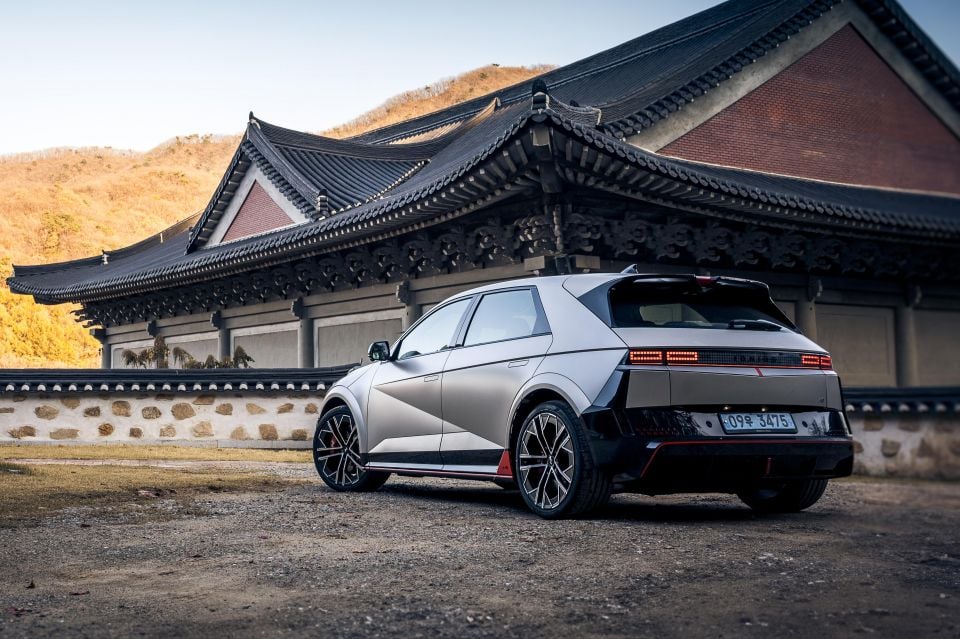

Quickly see how this car stacks up against its competition. Select any benchmark to see more details.
Where expert car reviews meet expert car buying – CarExpert gives you trusted advice, personalised service and real savings on your next new car.
Sure, electric vehicles (EVs) can be fun, in a ‘point and shoot’ kind of way, but can they be engaging? Can they appeal to all your senses, and can they entertain on a track?

With its first electric N car, Hyundai is battling preconceptions about EVs. The Korean company says that the Ioniq 5N, despite being larger and heavier than existing N vehicles, still follows the same N tenets: it has track capability, is a ‘corner rascal’, and is an everyday sports car.
The Ioniq 5’s design was inspired by the original Hyundai Pony, which led some people to think this was going to be some kind of small hatchback and not a 4.7m-long vehicle marketed as an SUV.
It’s no surprise then, that the Ioniq 5 takes quite nicely to the N treatment and looks like a proper hot hatch – if one with a wheelbase the length of a Palisade’s, riding on huge 21-inch forged aluminium wheels.

It sits 20mm lower, 50mm wider and 80mm longer than a regular Ioniq 5, and features sportier front and rear end styling and Luminous Orange accents.
It certainly looks the business, but can it live up to the N name?
Not only is the Ioniq 5 N the largest and heaviest N car yet, it’s also the most expensive.
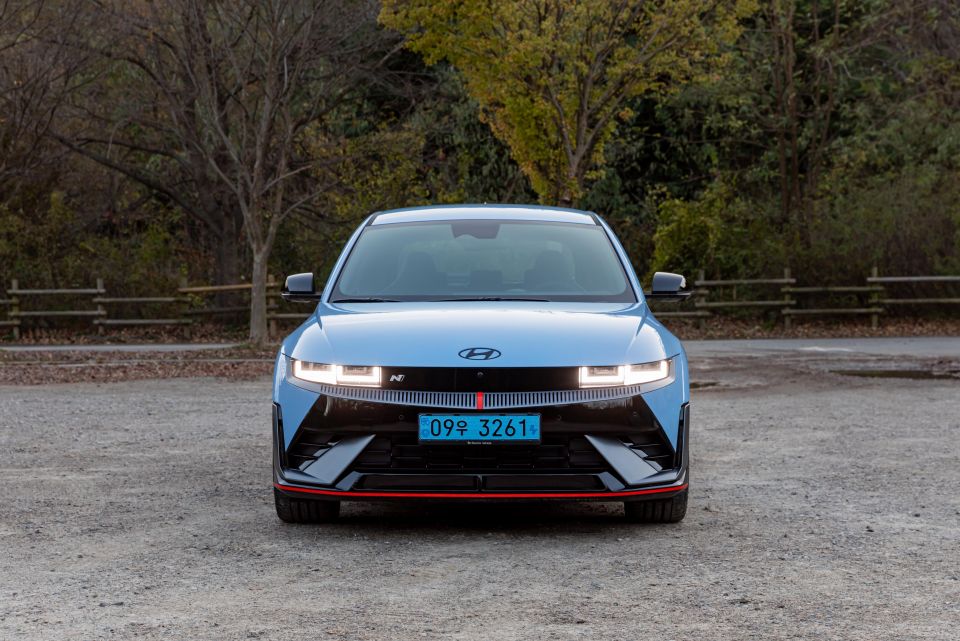
Priced at $111,000 before on-road costs, or $118,737 drive-away based on a Sydney postcode, with the only options being matte paint ($1000) and a glass roof ($2000). That’s a whopping $27,000 more than the next most expensive Ioniq 5, the dual-motor all-wheel drive Epiq.
It’s also $11,410 more than the related Kia EV6 GT, $19,600 more than a Tesla Model Y Performance, and if we’re talking powerful EVs outside of the wagon/crossover mould, around $42,000 more than a BYD Seal Performance.
The premium over a Ford Mustang Mach-E GT is much, much smaller though, at just $3335.
Buy your new car without the stress. It's fast, simple and completely free.

Great service from Travis and team, second time I have used this business would not hesitate to recommend them to anyone
Craig C.
Purchased a Ford Ranger in Sunshine Coast, QLD
CarExpert helped Craig save thousands on his Ford Ranger, now let us save you on your next new car.
Find a dealIn the transformation to an N, the Ioniq 5 loses some of its most clever features – the sliding centre console, for example, and the glove compartment drawer. However, all of the changes made to the Ioniq 5’s interior to make it an N serve to make the car feel more sporty and focused.
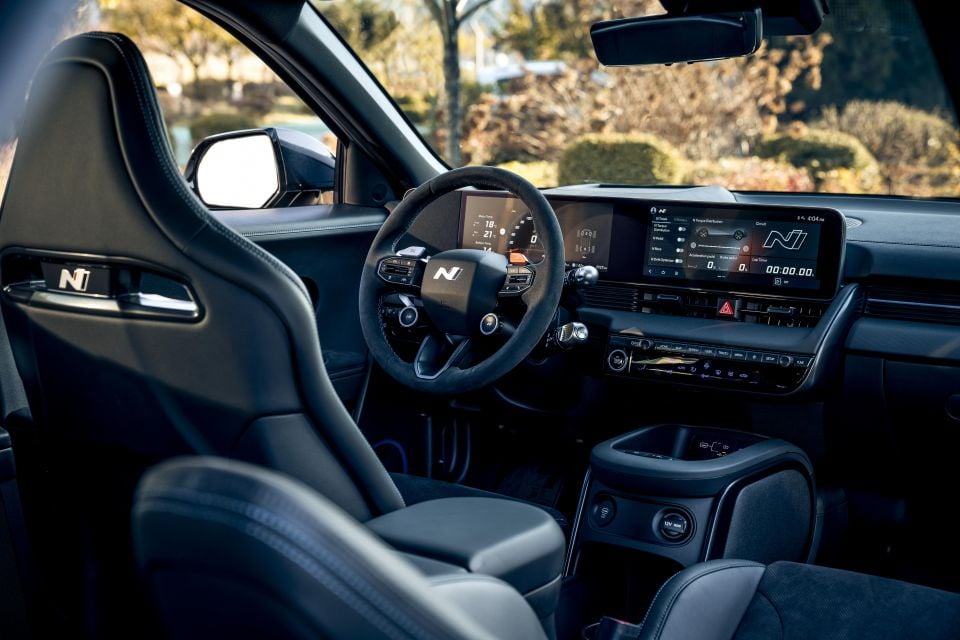
Take the centre console, for example. It’s now a fixed unit, but it features soft knee pads on either side.
Two USB-C outlets and a wireless charging pad are positioned nice and high, while another USB-C outlet and a 12V outlet are positioned lower, peering out over the cupholders.
The front seats aren’t power-adjustable, but they’re lovely, grippy items finished in leather and Alcantara that hug you in nicely. They also retain heating and ventilation, unlike the Kia EV6 GT’s sports seats.
The chunky, Alcantara-wrapped steering wheel features various buttons to toggle performance features – more on that later.
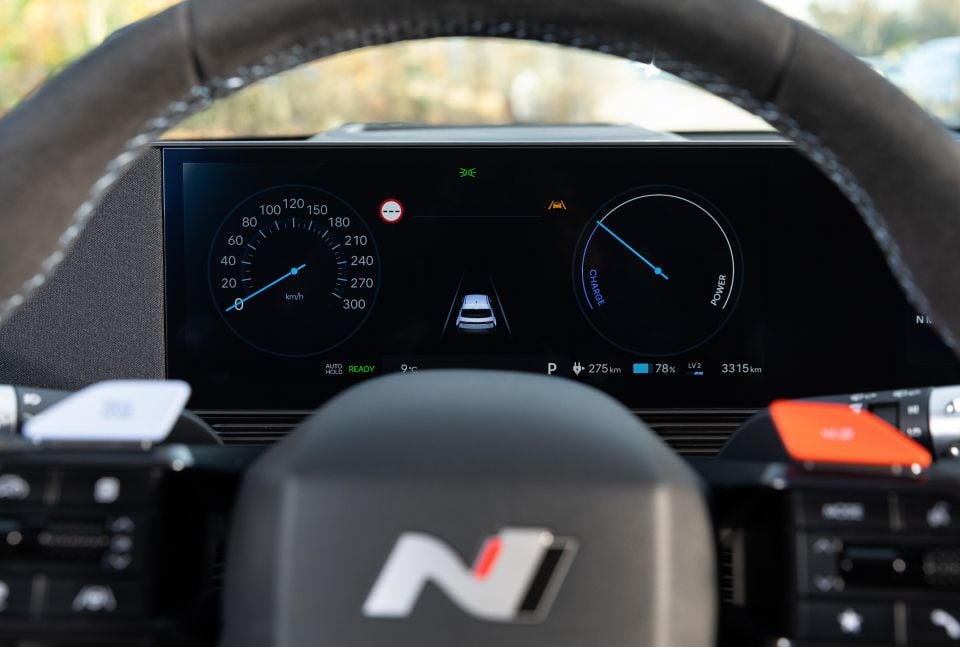
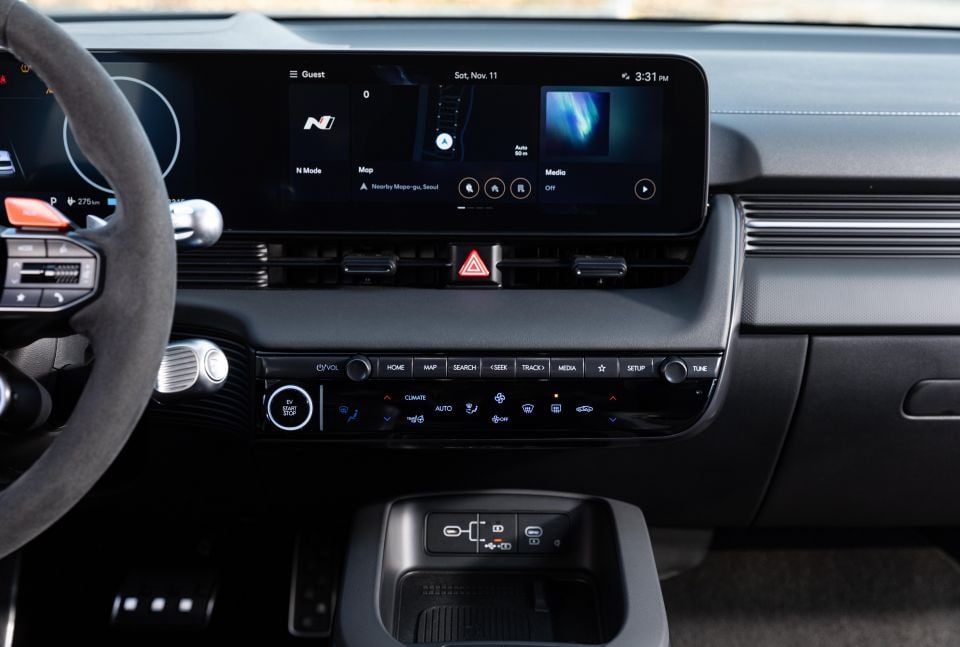

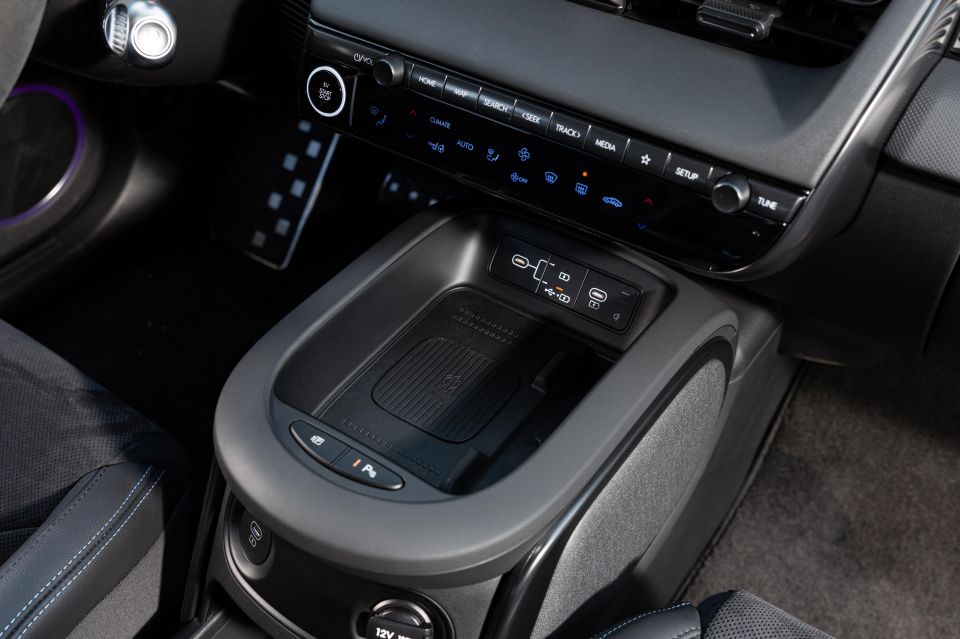
The interior otherwise doesn’t look that much different, though it’s available exclusively in black with Performance Blue highlights and checkered flag accents.
There’s still extensive use of sustainable materials, including garnishes made from recycled paperette, trim made from recycled PET bottles, recycled Alcantara, and other reused materials, while soft-touch trim is used across the tops of the dash and doors.
There’s also the slick dual 12.3-inch screens, with quick response times, generally intuitive menu structures, and some N-specific screens. The N menu will look familiar to owners of existing N products, though there are plenty of unique features that can be selected through here.
The Ioniq 5 N proved pleasant in the back seat, too, even after a few hours sitting back here.
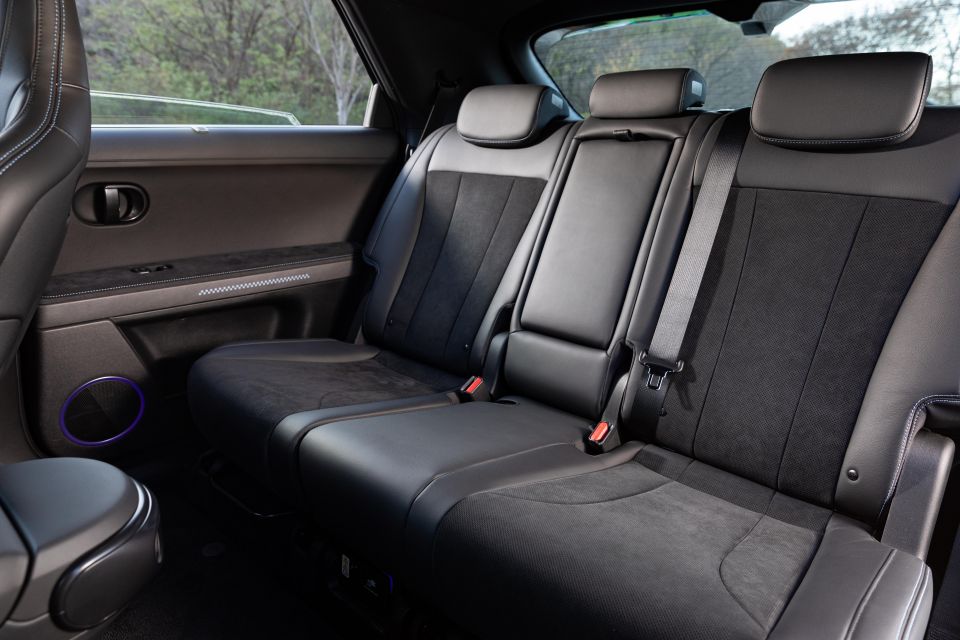
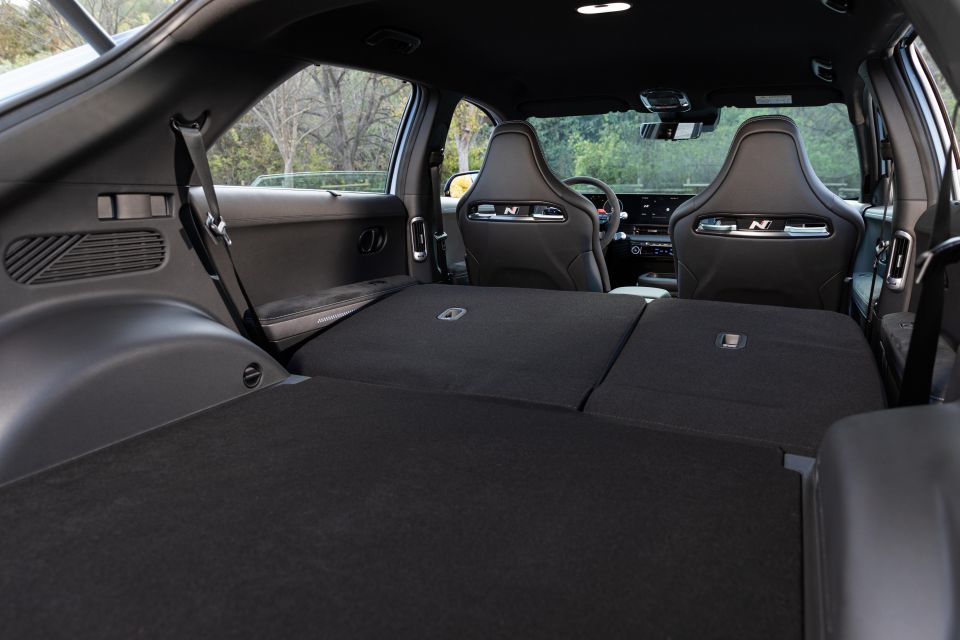
I’m 180cm tall and I could sit behind a suitable driving position for myself with plenty of legroom and decent headroom, a flat floor, and a comfortable bench.
Boot space is adequate. The rakish tailgate means taller, bulkier items won’t fit as well here as in more conventionally styled SUVs, but for a large hatchback – which, let’s be real, the Ioniq 5 is – there’s plenty of space, with 527L of cargo capacity back here.
The Ioniq 5 N features a dual-motor all-wheel drive powertrain, combining a 166kW front and 282kW rear motor for total system outputs of 448kW of power and 740Nm of torque.

In Boost mode, total outputs are bumped up to 478kW and 770Nm, bringing the 0-100km/h time down to just 3.4 seconds – just a tenth of a second quicker than an EV6 GT.
The electric motors, which Hyundai says can rev up to 21,000rpm, are powered by a new 84kWh lithium-ion battery, with enhanced thermal management and a claimed peak charging speed of 350kW. Hyundai says it can be charged from 10 to 80 per cent in just 18 minutes.
The Ioniq 5 N comes with a battery preconditioning feature with separate Drag and Track modes, allowing you to get the battery to the optimal temperature for either kind of driving. Estimated electric range on the stricter WLTP cycle is 448km, 24km more than an EV6 GT.
Energy consumption on our long highway jaunt up from Mokpo to Seoul did get quite high at 30kWh per 100km, though there was some Boost mode-fuelled overtaking involved. We had to stop to charge about 250km in as our battery fell below 10 per cent; we had started with over 90 per cent charge.
For the rest of the journey, around 115km or so of driving, we saw consumption of around 24kWh per 100km. For this leg of the trip, there was more traffic and therefore slower speeds.
Hyundai acknowledged we whiny journalists would complain about the level of complexity inherent in the Ioniq 5 N, but said owners embrace the level of adjustability.
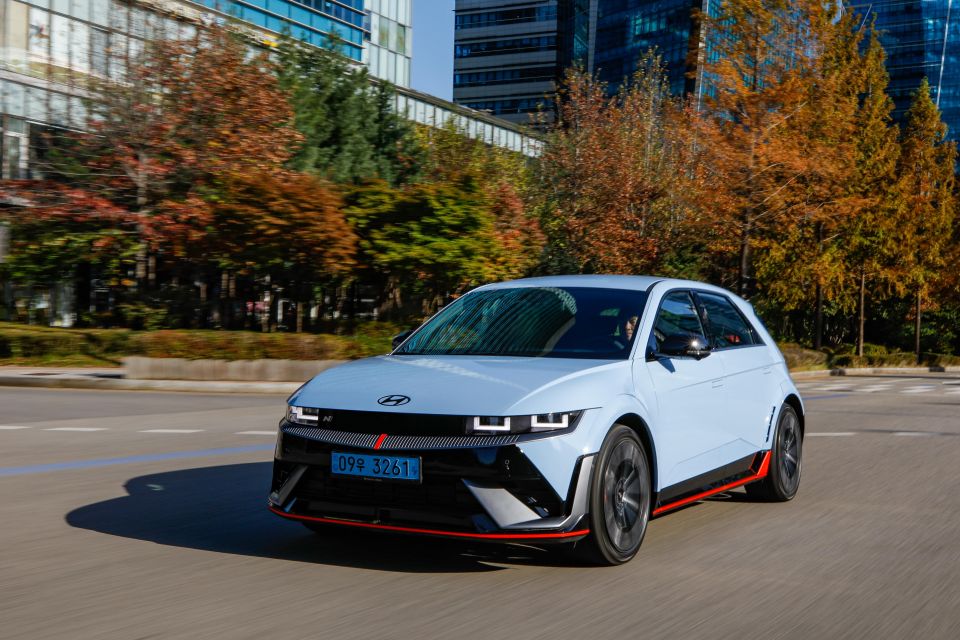
Count me as a fan of just how much you can customise the drive experience, even if the dizzying array of adjustments is daunting at first glance.
I’ll try and cover them all off here, but I’m sure I’ve forgotten some feature called N Grunt Analyser or N Acceleration Tickler buried deep in the N menu.
Our drive took us from Seoul to Mokpo and back on generally smooth highways, and in Normal drive mode the N proved firm yet comfortable even for rear-seat occupants with just the occasional muffled thump from an expansion joint.
Flicking it to Sport mode noticeably firms up the suspension, but it isn’t uncomfortable. The cabin is also nicely insulated, further adding to its highway cruiser credentials; wind noise only becomes noticeable above 150km/h.
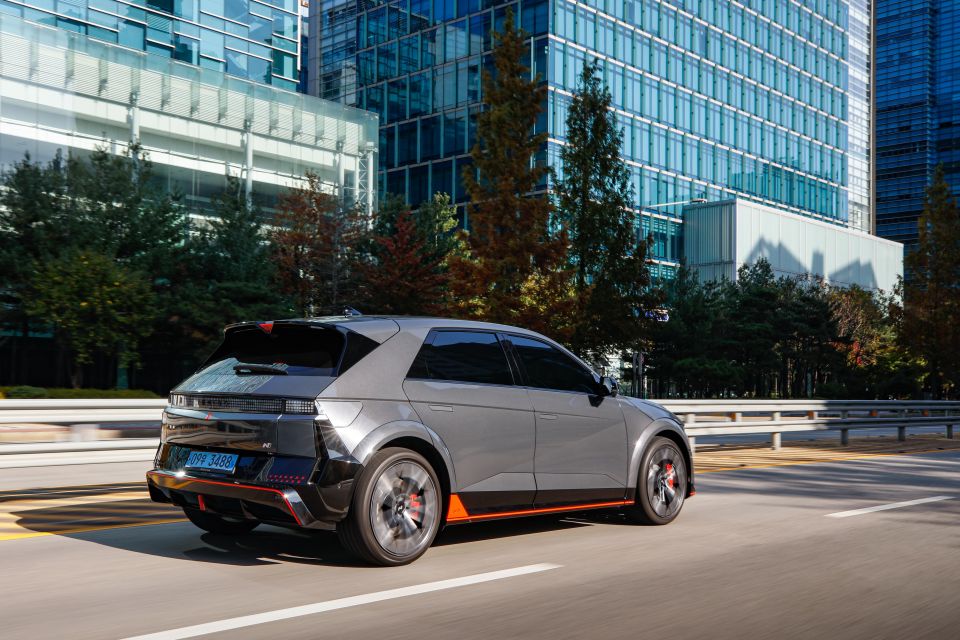
Ah, but where were we driving? To a track, of course, so we could test throw the Ioniq 5 around some corners and see how agile Hyundai N engineers have been able to make this 2.2-tonne electric car.
After all, we knew it was going to be quick. That’s almost a prerequisite for electric cars these days, and the Ioniq 5 N’s 0-100km/h time of 3.4 seconds is certainly rapid.
But the Ioniq 5 N needed to be more than just quick in a straight line to be worthy of the N nameplate. The track is where you can really go to town with all of the settings in the N menu.
Before you dive into the menu screen, there are shortcut buttons on the steering wheel: a drive mode selector; the N Grin Boost button that puts the car into overboost mode for 10 seconds; and two N buttons.
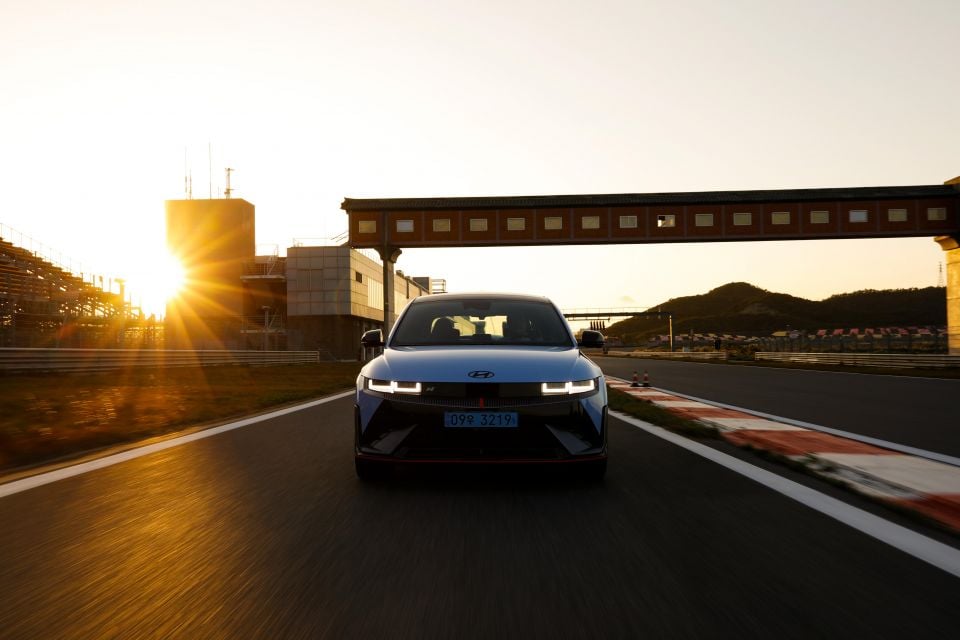
One of the N buttons by default puts the car into N drive mode, while the other activates N e-shift.
If you’re configuring your own N1 or N2 mode, you can toggle different settings for the electric motors, steering, suspension, electronic limited-slip differential, electronic stability control, and propulsion sound.
There are three artificial propulsion sounds: Supersonic, intended to sound like a fighter jet; Evolution, which is hard to describe but easy to turn off; and Ignition, which is intended to sound like a combustion-powered N car, complete with pops and crackles.
Sounds can even be heard outside of the car, as the soundtrack is pumped through eight internal speakers and two on the outside.

It all sounds very complicated, doesn’t it? And yet, it’s very easy to zero in on your ideal settings, as I did on the track. We did seven laps, with a Hyundai engineer changing up the selections every couple of laps.
When it came time for me to choose my own settings for a lap, I turned on the N e-shift, the Ignition engine sound, and set the N Torque Distribution function to send 100 per cent of torque to the rear wheels. The latter allowed for some entertaining controlled oversteer.
The N e-shift is one of those things that seems like a silly gimmick on paper, and yet makes the car so much more engaging.
It simulates shifts like those of an eight-speed dual-clutch automatic transmission, including the jolt of an upshift and a rev-matching sensation for downshifts, and you can even use the paddles to change (simulated) gear.
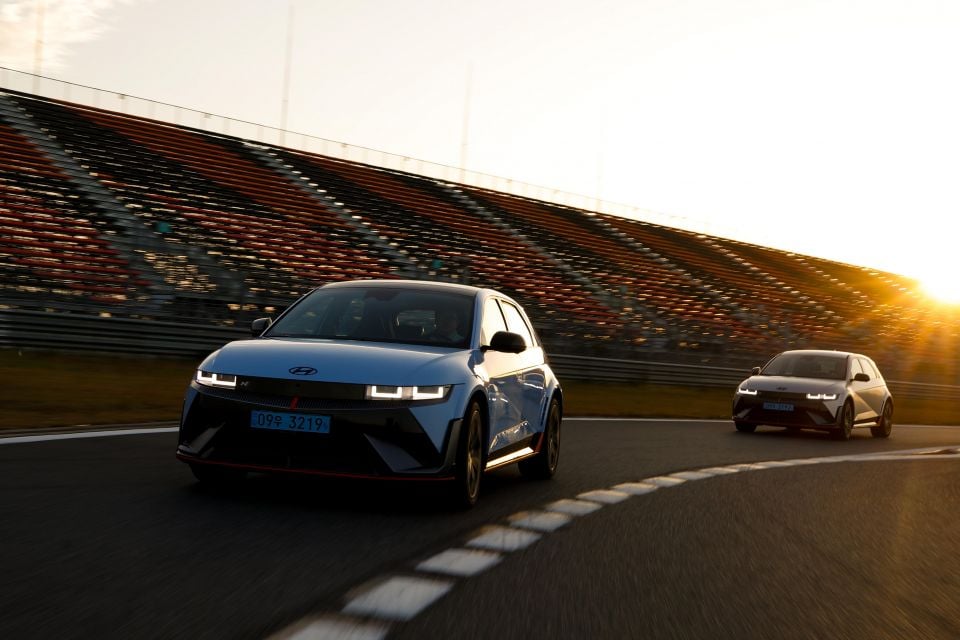
It works splendidly in concert with the artificial propulsion sound, and together these features leave you with the impression you could blindfold somebody and take them for a drive and they might genuinely think this is a combustion-powered car.
The N Pedal feature is a regenerative braking function you can use on the track, intended to help facilitate quick weight transfer, and has three selectable strengths. N Pedal 2 struck the best balance, and allows you to rely a little less on the brake pedal during a track stint.
That’s not to say these settings are for the track only, though. Even while commuting in the Ioniq 5 N, I left N e-shift and the Ignition sound on. Many EV aficionados espouse the virtues of these vehicles as being smooth and silent, and yet the Ioniq 5 N lets you have your cake and eat it, too.
You can commute in silence, and then turn on the simulated engine sound and shifting to have more fun.
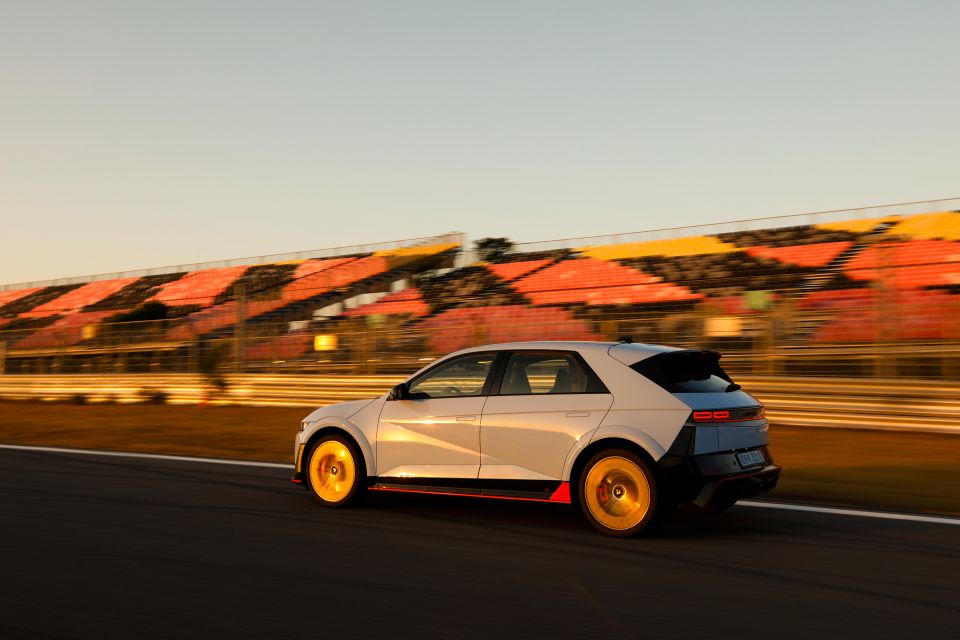
Where expert car reviews meet expert car buying – CarExpert gives you trusted advice, personalised service and real savings on your next new car.
Of course, there was the very real fear all of these simulated doodads and selectable whatnots would be there simply to disguise the fact this is a heavy car that has no business being on a track – or a “2.2-tonne elephant”, to use Hyundai N technical advisor Albert Biermann’s words.
And sure, at the limit, when being pelted around tight corners, the Ioniq 5 N’s weight can sometimes be felt. Despite this, it generally feels lighter than it is and it feels nicely hunkered down – particularly for an “SUV”.
There’s a higher steering ratio that brings greater feedback than the standard Ioniq 5’s setup, and the steering inspires confidence around the bends.
Hyundai also says it has added 42 welding points and extra adhesives, among other enhancements to increase rigidity. It doesn’t feel even remotely willowy or wallowy, with a stiff feel to the structure.
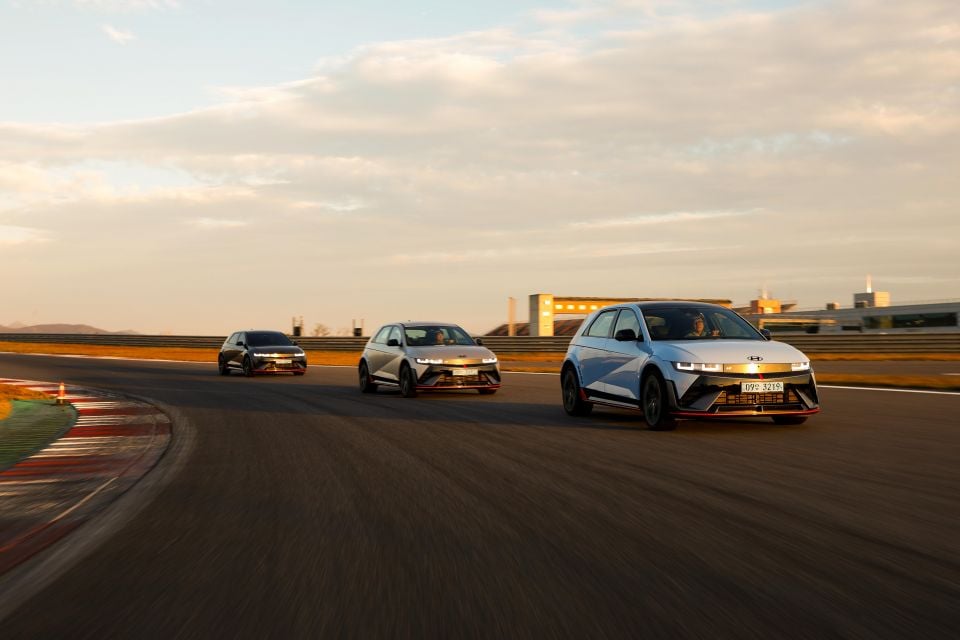
Unusually, the Korean-market Ioniq 5 N will have a stiffer feel at low speeds; Australian-market models will instead get the slightly softer European tune.
It’s shod with sticky Pirelli P-Zero 275/35R21 tyres, with stopping handled by four-piston 400mm front brakes and single-piston 360mm rear brakes.
However, the regenerative braking also plays a part here, with deceleration force of up to 0.6g, and even during ABS braking at up to 0.2g.
There are other N-specific features you can use in this hot Ioniq 5; including launch control, a left-foot braking feature, and the N Drift Optimizer which, while Hyundai executives made clear wasn’t intended for professional drifters, can still provide better drifts by tailoring torque delivery, the ESC, and the regenerative braking.
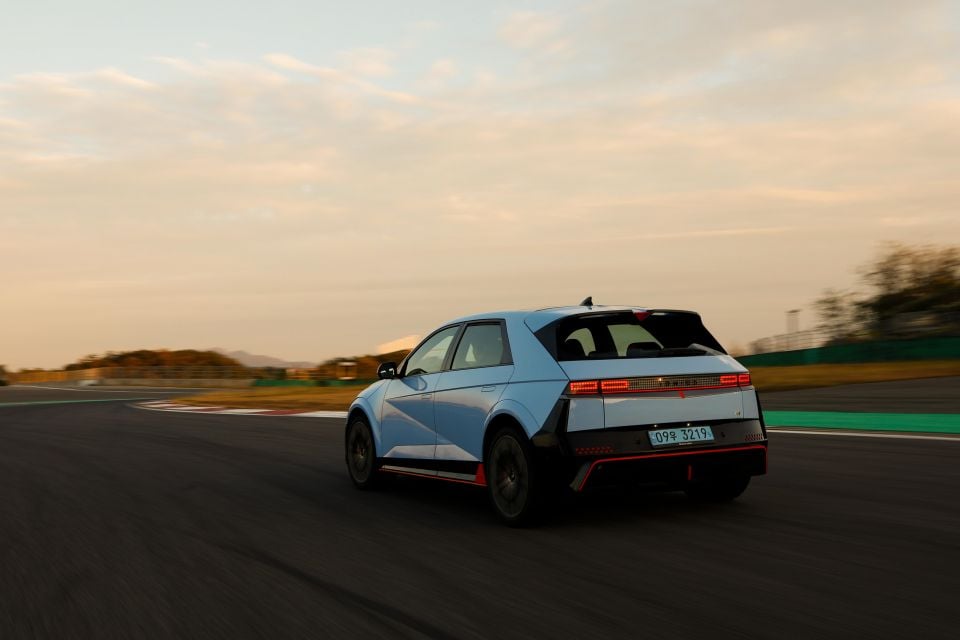
An N Race mode comes with separate Sprint and Endurance modes, the latter slightly reducing maximum output to increase driving distance. N Race mode also cools down the electric motors and battery for maximum track capability.
Suffice it to say, if you buy an Ioniq 5 N, it’ll be quite some time before you’ve experienced everything the vehicle has to offer.
Hyundai Australia released pricing months ago even as sister divisions overseas have remained coy about pricing. However, it hasn’t released a full list of standard equipment.
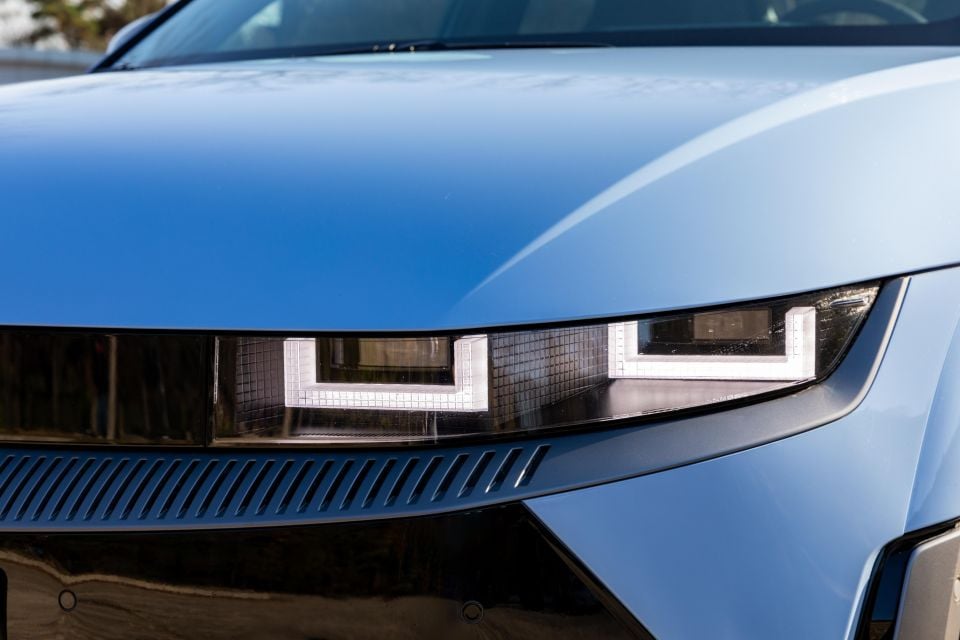
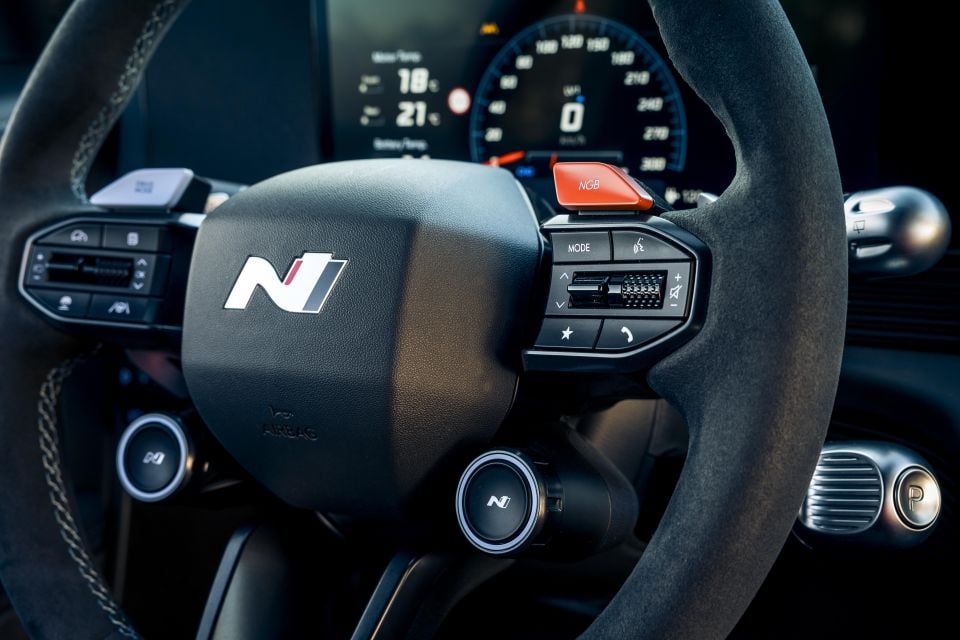


Expect the following equipment to be standard:
Available exterior colours comprise:
Hyundai Australia hasn’t released a full list of standard safety equipment either, while the Ioniq 5’s five-star ANCAP rating hasn’t been extended to the N, at least not yet.
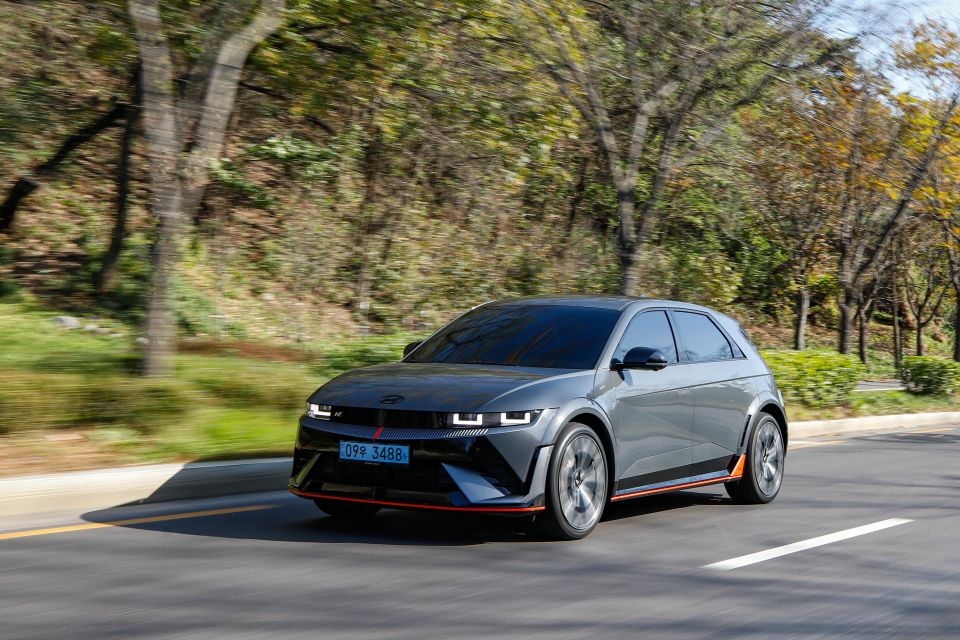
We would expect the N to mirror the rest of the Ioniq 5 range in terms of safety equipment.
All Ioniq 5 models come standard with the following kit in Australia:
The forward autonomous emergency braking (AEB) feature, which Hyundai calls Forward Collision-Avoidance Assist, includes the following functionality:
Hyundai has yet to release service pricing and warranty information for the Ioniq 5 N.
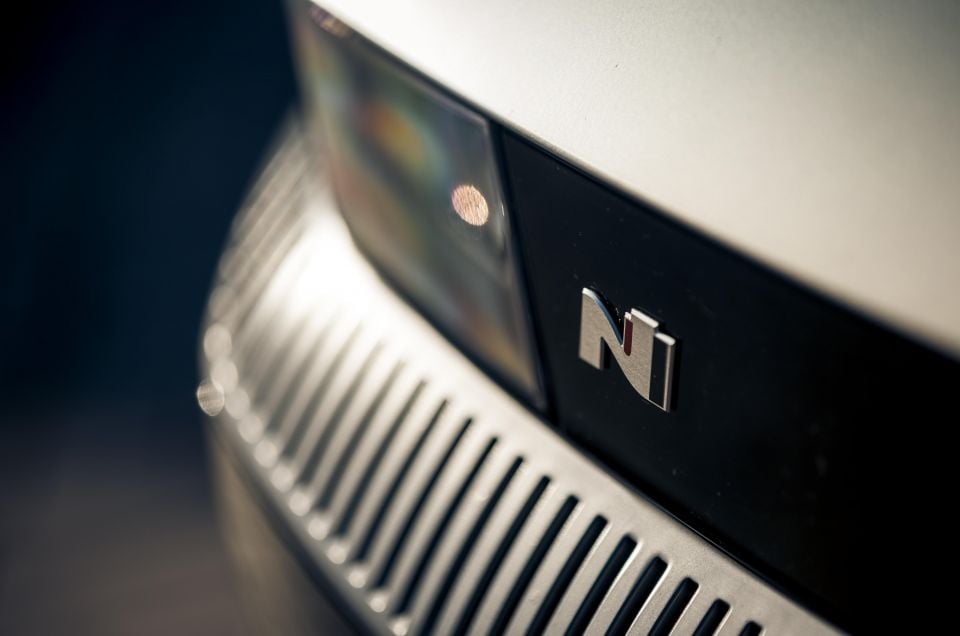
The core Ioniq 5 range is backed by a five-year, unlimited-kilometre warranty and an eight-year, 160,000km high-voltage battery warranty.
Servicing is required every 24 months or 30,000 kilometres, whichever comes first, in the regular Ioniq 5. The first three services are capped at $570, $1090 and $570, respectively. It’s unclear if the N’s visits will be any pricier.
Hyundai could have just made a quicker Ioniq 5 with a firmer ride and called it a day. We’re glad they didn’t.
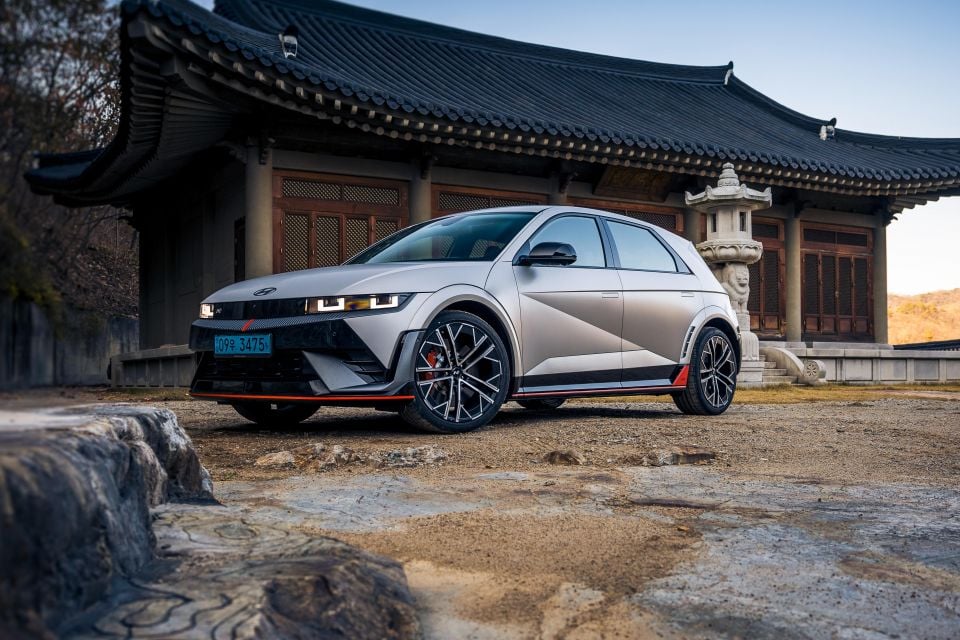
The Ioniq 5 N is very much befitting of the vaunted N badge. This isn’t just some eye-wateringly fast but dull, point-and-shoot EV.
It looks, feels and sounds like a Hyundai N car, if a rather large and heavy (and expensive) one. And it might just be the most entertaining EV I’ve driven.
The adjustments you can make in that expansive N menu allows you to turn this from a pleasant, comfortable and quiet commuter to a fun car for a whip around the track.

We’d argue the effort that has gone into honing this for the track and giving owners a wealth of selections makes this worth the $11,000 premium over a Kia EV6 GT.
But $111,000 is still a steep price – particularly when a Tesla Model Y Performance rings up at $91,400 before on-roads. Nevertheless, you’d be hard-pressed to find something electric that blends this level of power and engagement for this price.
You may never take it to the track, but the Ioniq 5 N will still put a smile on your face in day-to-day driving and you can toggle between mild and wild with ease.
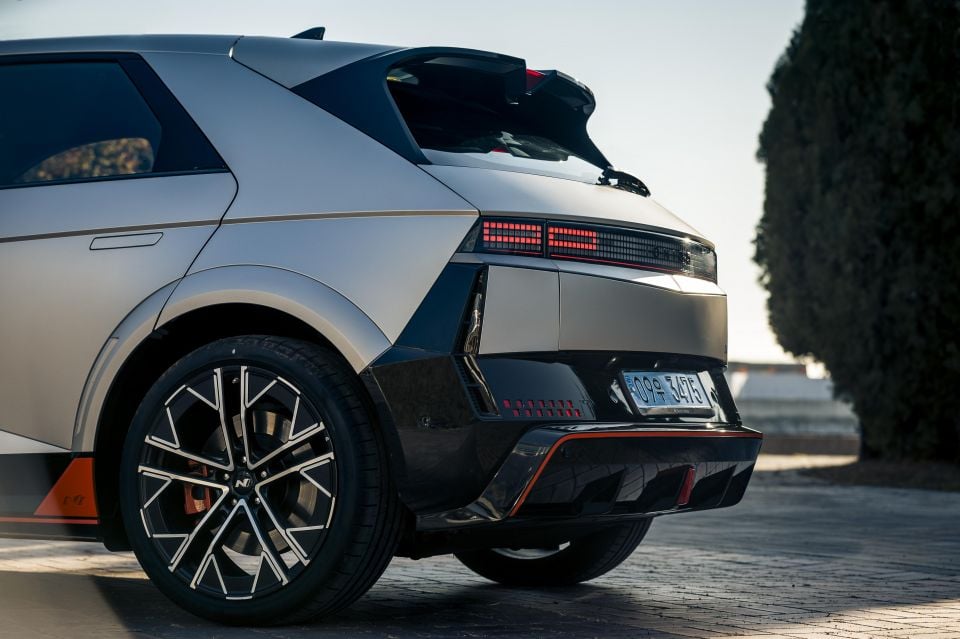
Click the images for the full gallery
BUY: Hyundai Ioniq 5 MORE: Everything Hyundai Ioniq 5
Where expert car reviews meet expert car buying – CarExpert gives you trusted advice, personalised service and real savings on your next new car.
William Stopford is an automotive journalist with a passion for mainstream cars, automotive history and overseas auto markets.


CarExpert.com.au
3 Days Ago


Damion Smy
3 Days Ago


Damion Smy
4 Days Ago


Josh Nevett
4 Days Ago


Max Davies
4 Days Ago


Ben Zachariah
5 Days Ago